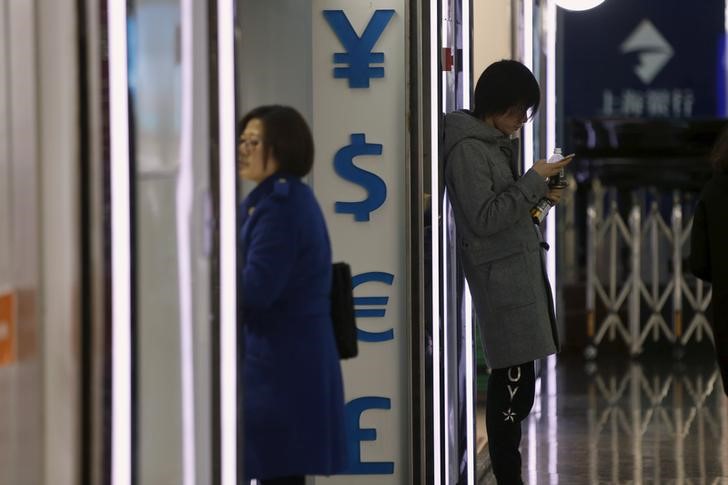Investing.com -- Most Asian currencies retreated on Monday as traders favored the dollar ahead of more key cues on U.S. monetary policy this week, while the Chinese yuan was hit by growing expectations for a rate cut by the People’s Bank.
Yuan wallows at six-month lows
The yuan fell 0.2% to a six-month low of 7.1451 against the dollar, as more major, state-owned Chinese banks began cutting interest rates on yuan deposits. The move heralds a broader cut in the central bank’s loan prime rate later this month, as it struggles to shore up economic growth.
A post-COVID rebound in the Chinese economy appeared to have slowed in the past two months, as suggested by dismal business activity and inflation data. This has pushed up expectations of more supportive measures by Beijing to shore up growth, putting a potential rate cut on the cards.
The yuan has suffered heavy losses on this notion, and has also come under pressure from increased pessimism over a Chinese economic recovery this year. Concerns over China have also pressured most other Asian countries with heavy trade exposure to the country.
The South Korean won lost 0.5% on Monday, while the Taiwan dollar and Australian dollar fell 0.4% and 0.1%, respectively.
Fed anticipation keeps Asia FX on backfoot
Broader Asian currencies fell as markets hunkered down before the conclusion of a Federal Reserve meeting on Wednesday. While the central bank is widely expected to keep rates on hold after a year-long hiking spree, markets remained on edge over any hawkish surprises.
Focus is also on key U.S. inflation data due on Tuesday, which is likely to factor into the Fed’s decision on rates. While U.S. inflation has eased from the near 40-year peaks seen in 2022, it is still expected to have remained well above the Fed’s 2% annual target in May.
High inflation is expected to keep U.S. interest rates higher for longer, pressuring Asian currencies even if the Fed decides to pause its rate hike cycle this week.
The dollar firmed in Asian trade, with the dollar index and dollar index futures adding 0.1% each.
BOJ on tap, but no surprises expected
The Japanese yen fell 0.2% as data showed the country’s wholesale inflation slowed in May.
With recent data also showing a dip in consumer inflation, the Bank of Japan is unlikely to alter its ultra-loose policy when it meets later this week.
A dovish outlook on the BOJ is expected to keep the yen under pressure in the coming months, as the gap between local and overseas rates widens.
